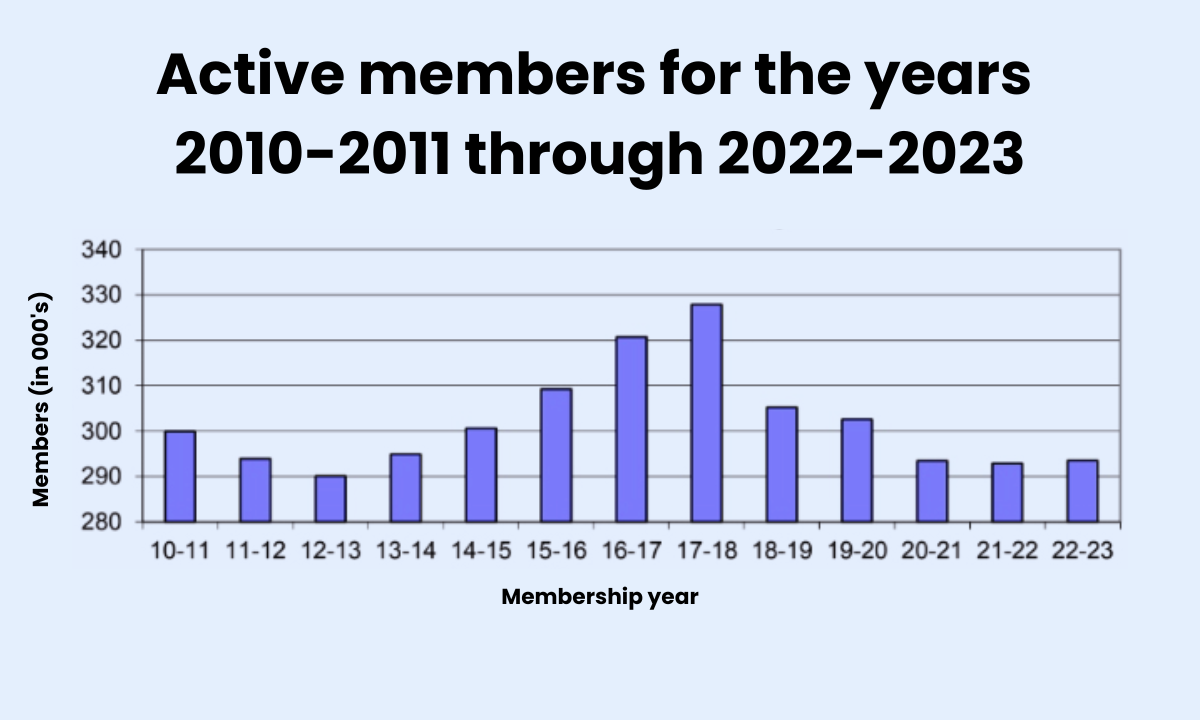Exclusive: California Teachers Association Continues to Lose Members and Raise Dues
Analysis: 18,000 eligible public education employees chose not to join CTA in 2019. This year, the number of non-members ballooned to almost 36,000.

Get stories like this delivered straight to your inbox. Sign up for The 74 Newsletter
The California Teachers Association has long been the most powerful force in shaping the state’s school finance policy. It usually gets what it wants from the legislature, and does even better in preventing things it doesn’t want.
But at least in a relative sense, the past five years have not been to CTA’s liking. It spent $20 million in 2020 in a failed attempt to raise property taxes, and the Supreme Court’s Janus ruling in June 2018, which banned the collection of agency fees from non-members, has had a damaging effect, but not quite in the way most observers expected.
By the union’s own calculation, only about 2,700 teachers dropped their membership in the five years since Janus. That’s hardly debilitating to a union of almost 300,000 members. The hopes of Janus supporters and the fears of union supporters that Janus would lead to wholesale resignations did not come to pass in California.
However, it appears the ruling has been harmful to union recruiting of new members. According to internal union documents, in 2019 there were only 18,000 local public education employees who were eligible for CTA membership but did not join. As of the end of September 2023, the number of non-members had ballooned to almost 36,000.
Overall, the union ended the 2022-23 school year with 38,000 fewer members than it had when it began the first post-Janus school year in 2018-19. This chart, from internal CTA documents, shows the membership trends over the past 12 years.
CTA’s dues aren’t tied to membership levels, but to average teacher salary. Federal COVID relief money boosted that significantly, to the point where the union’s draft budget for 2024-25, obtained exclusively by Union Report, calls for a $30 dues increase. That would bring state level dues to $816. Coupled with national dues, every teacher belonging to CTA will pay at least $1,020 next year. Local dues will add to that figure.
The union estimates the increase will net it an additional $8 million, of which $3.3 million is earmarked for staff pay increases. Another $3.5 million is designated as “excess income over expenses,” which in another context would be called “profit.”
Overall, CTA is budgeting for $228 million, which is almost $40 million more than the national American Federation of Teachers received in dues this year.
The California union has several pots in which to place its income, many having to do with politics. CTA currently has $3.2 million in its candidate political action committee, $4.7 million in its independent expenditure committee, $8.4 million in its media fund, $15.3 million in its advocacy fund, and a whopping $38.9 million in its ballot initiative fund.
It is too early to list everywhere the union’s ballot measure spending might go, but it is already planning opposition to the Taxpayer Protection and Government Accountability Act. Scheduled for the November 2024 ballot, the measure would require majority voter approval for any tax increase passed by the legislature.
CTA’s financial involvement in local school board races is underreported. The state union recently pledged $100,000 to help elect Telly Tse and Neda Farid Faroumand to school board seats in the Glendale Unified School District, where CTA has roughly 1,300 members. Tse, coincidentally, just finished a term on the CTA board of directors.
The union also contributed $55,000 to recall board members Rick Ledesma and Madison Miner in the Orange Unified School District.
There is no prospect for significantly diminishing the union’s role in state politics, though it appears CTA will maintain its position through ever-increasing funds collected from ever-decreasing membership levels. America’s industrial unions have survived decades with such a model. CTA may be on the wrong side of the slope, but the slope is shallow enough to ensure its continued influence for many years to come.
Mike Antonucci’s Union Report appears most Wednesdays; see the full archive.
Get stories like these delivered straight to your inbox. Sign up for The 74 Newsletter

;)